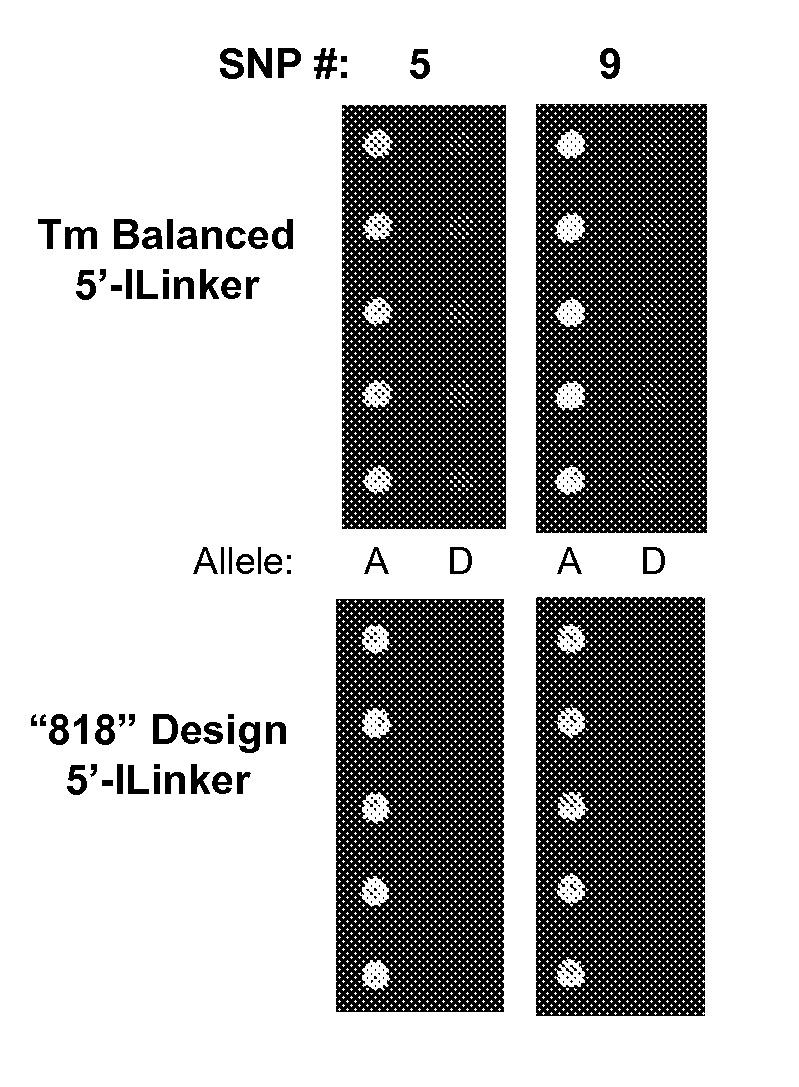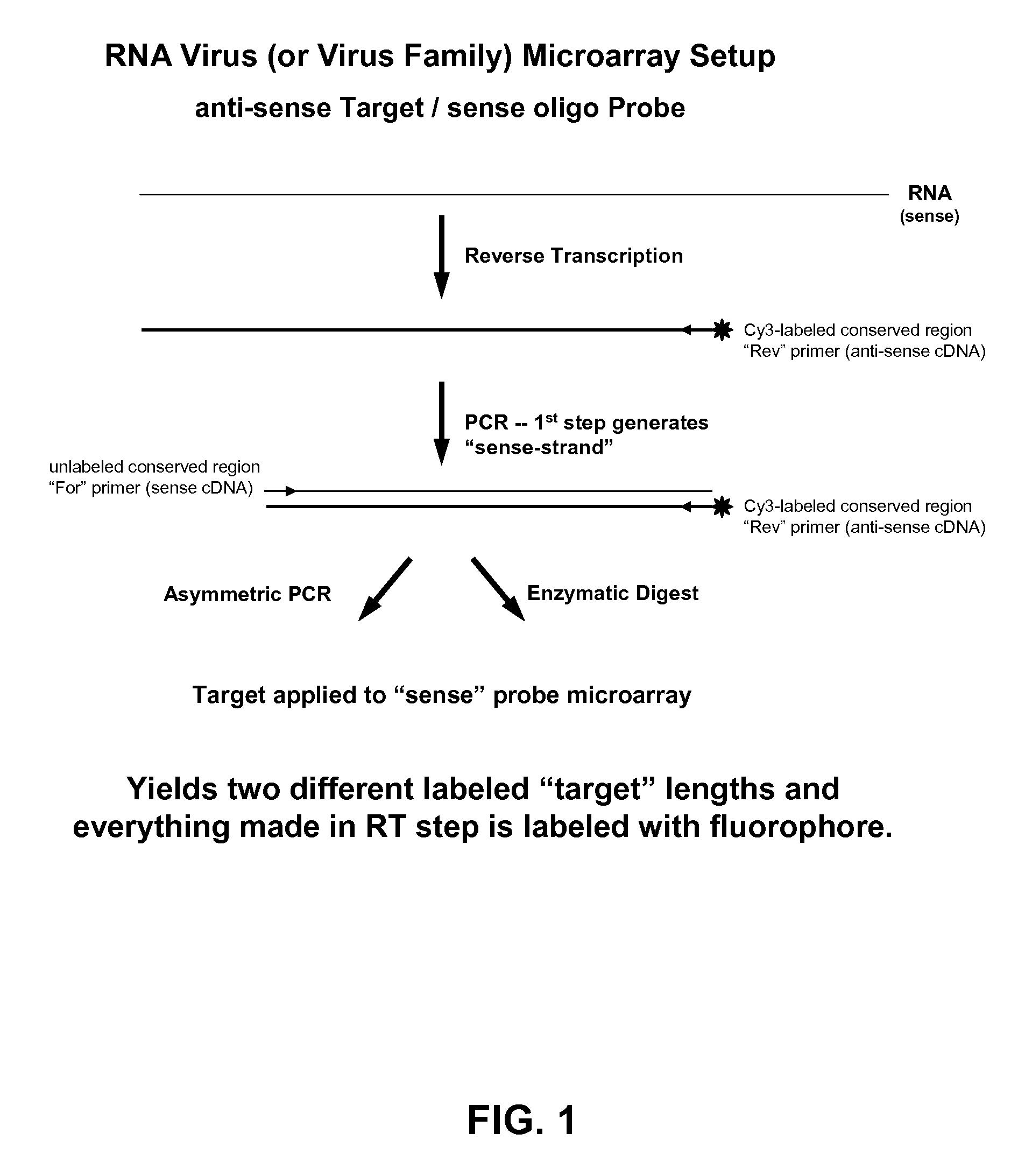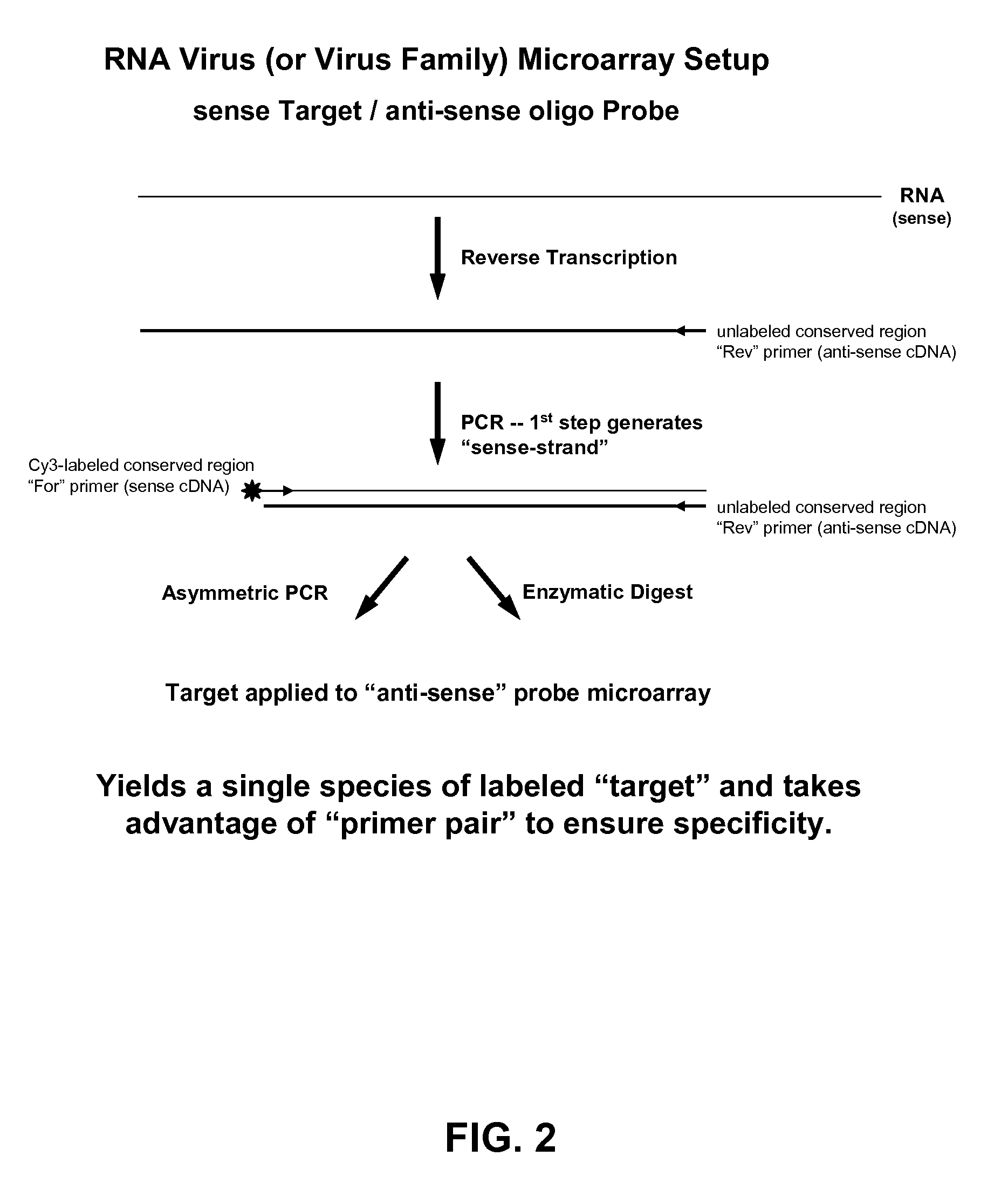Microarray system with improved sequence specificity
- Summary
- Abstract
- Description
- Claims
- Application Information
AI Technical Summary
Benefits of technology
Problems solved by technology
Method used
Image
Examples
example 1
Probe Design, Attachment Chemistry & Hybridization Buffer
[0078]The following example describes attachment of oligonucleotides to surfaces, including epoxide surfaces, hydrazide attachment chemistry (and the increase sensitivity it affords), the benefit of use of short nucleic acids probes to improve specificity (specifically a 17mer having an “818” probe design), and use of new hybridization and wash conditions and protocols to enhance detection and specificity of nucleic acid sequence detection in an array or microarray assay format.
[0079]Probes for several single nucleotide polymorphism (SNP) sites within the cotton genome were designed using thermodynamic algorithms to normalize melting temperatures (Tm) of perfect-match hybridization events while simultaneously maximizing the predicted Tm differences for allelic mismatches. Due to sequence content variation in SNP sites, Tm normalized probes had lengths that varied from 17 to 29 bases, as well as having variable SNP locations wi...
example 2
Preparation of Single-Stranded Labeled Targets Using Either Lambda or T7 Exonuclease Degradation of an Amplified Double-Stranded Product
[0091]The following example demonstrates a method to prepare labeled single-stranded targets from a double-stranded product of an exponential PCR reaction. Lambda exonuclease and T7 exonuclease are both 5′ to 3′ exonucleases that require and utilize double-stranded DNA (dsDNA) as a substrate. Modifications to the 5′-end of one strand in the duplex that confer sensitivity to or protection against exonuclease activity result in that strand being preferentially degraded by or protected from exonuclease activity, while the opposite strand in the duplex is preferentially protected or degraded. Thus, the exonuclease degradation reaction results in a single-stranded target suitable for hybridization. Nuclease sensitive or resistant modifications can be introduced by using modified primers in amplification reactions (e.g., PCR). Typically, one primer is mod...
example 3
[0100]The following example illustrates the benefit of using single-stranded nucleic acid targets over double-stranded nucleic acid targets for microarray hybridizations, utilizing a synthetic SNP model system. In addition, this example demonstrates the greater sensitivity that can be achieved for sequence variation detection using various elements of the method of the present invention.
[0101]Without consideration of the local sequence (or thermodynamic) environment of a SNP-site, the following short oligonucleotide array probe set was synthesized as unmodified and as 5′-hydrazide modified oligonucleotides; both unpurified (desalted) and HPLC-purified preparations were tested. The 17mer “818” design was employed.
SEQ ID NO:38TTCTGTGACTGGTGAGTp-101 mer (C)SEQ ID NO:39TTCTGTGAGTGGTGAGTp-101 mer (G)SEQ ID NO:40TTCTGTGAATGGTGAGTp-101 mer (A)SEQ ID NO:41TTCTGTGATTGGTGAGTp-101 mer (T)Underlined bases indicate the synthetic SNP site.
[0102]For this example, oligonucleotides were printed at 4...
PUM
| Property | Measurement | Unit |
|---|---|---|
| Fraction | aaaaa | aaaaa |
| Fraction | aaaaa | aaaaa |
| Fraction | aaaaa | aaaaa |
Abstract
Description
Claims
Application Information
 Login to View More
Login to View More - R&D
- Intellectual Property
- Life Sciences
- Materials
- Tech Scout
- Unparalleled Data Quality
- Higher Quality Content
- 60% Fewer Hallucinations
Browse by: Latest US Patents, China's latest patents, Technical Efficacy Thesaurus, Application Domain, Technology Topic, Popular Technical Reports.
© 2025 PatSnap. All rights reserved.Legal|Privacy policy|Modern Slavery Act Transparency Statement|Sitemap|About US| Contact US: help@patsnap.com



